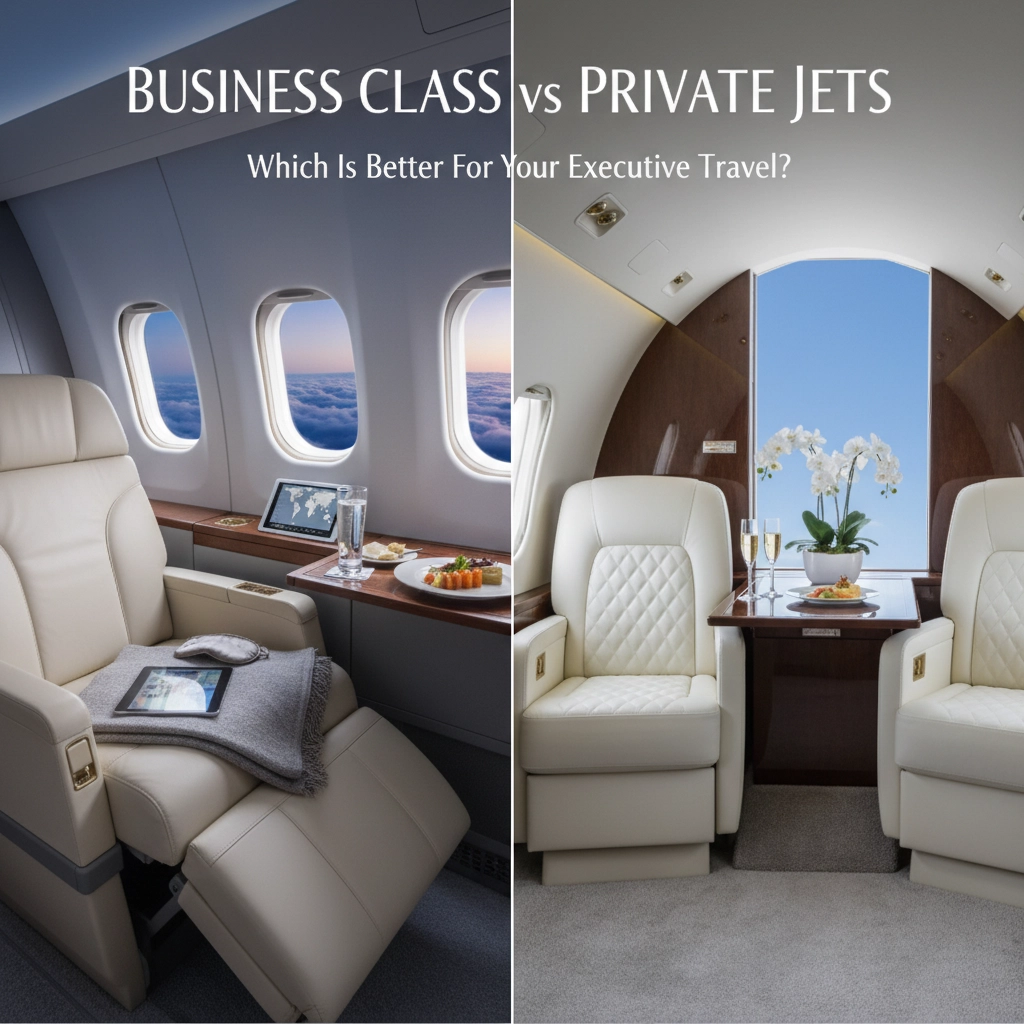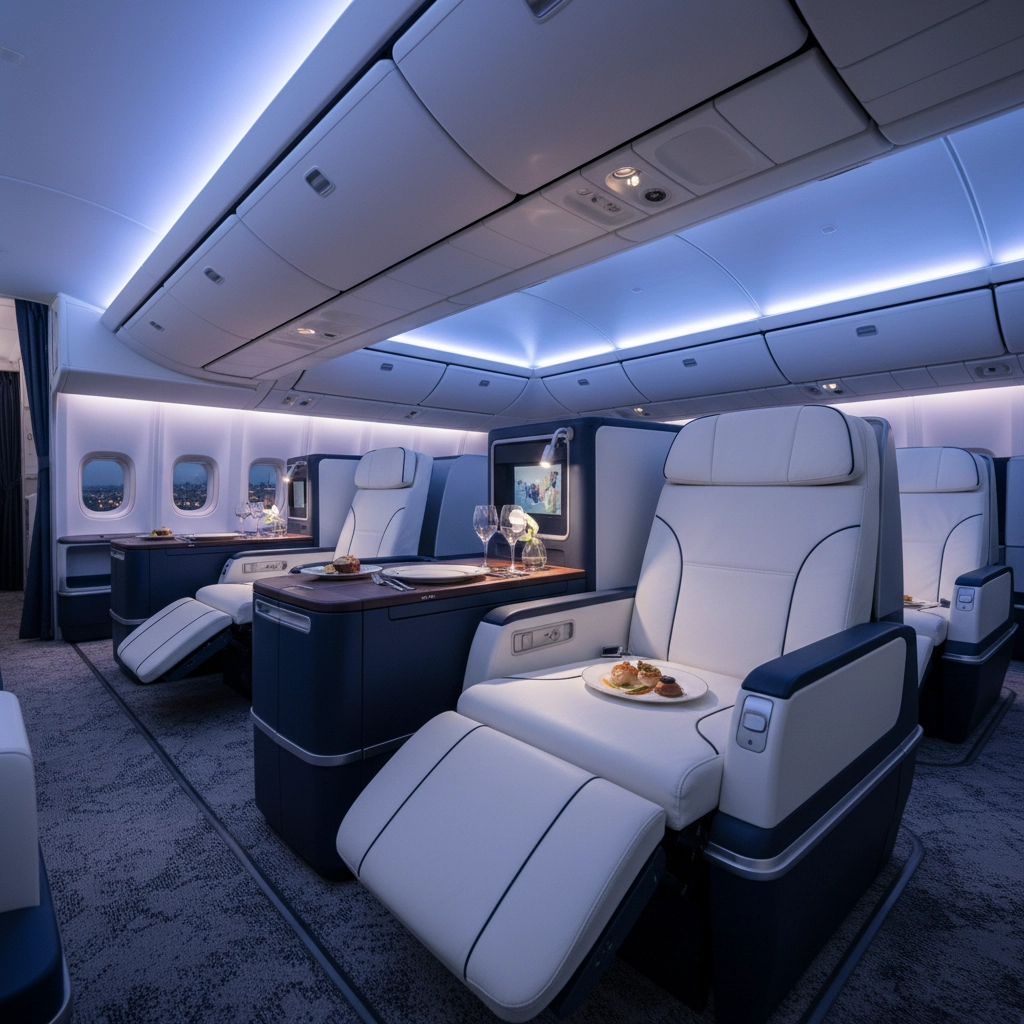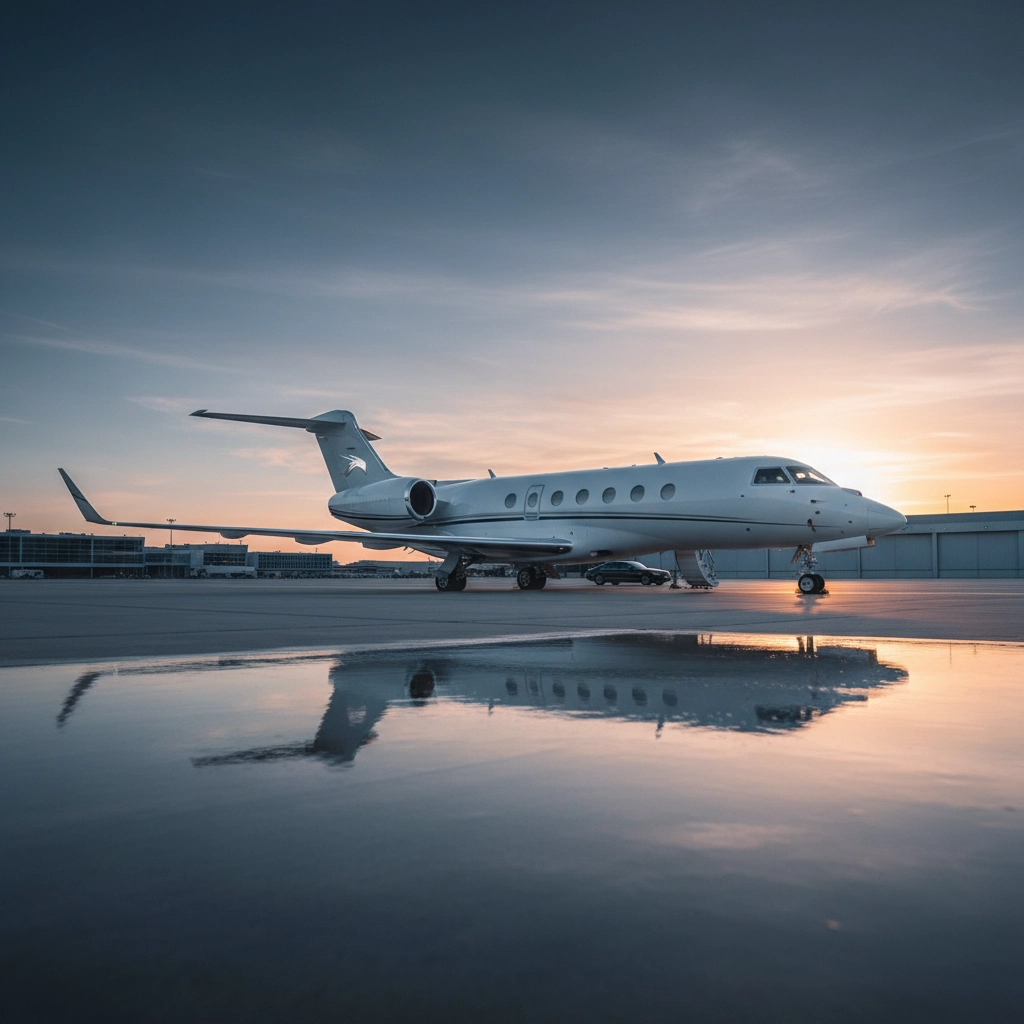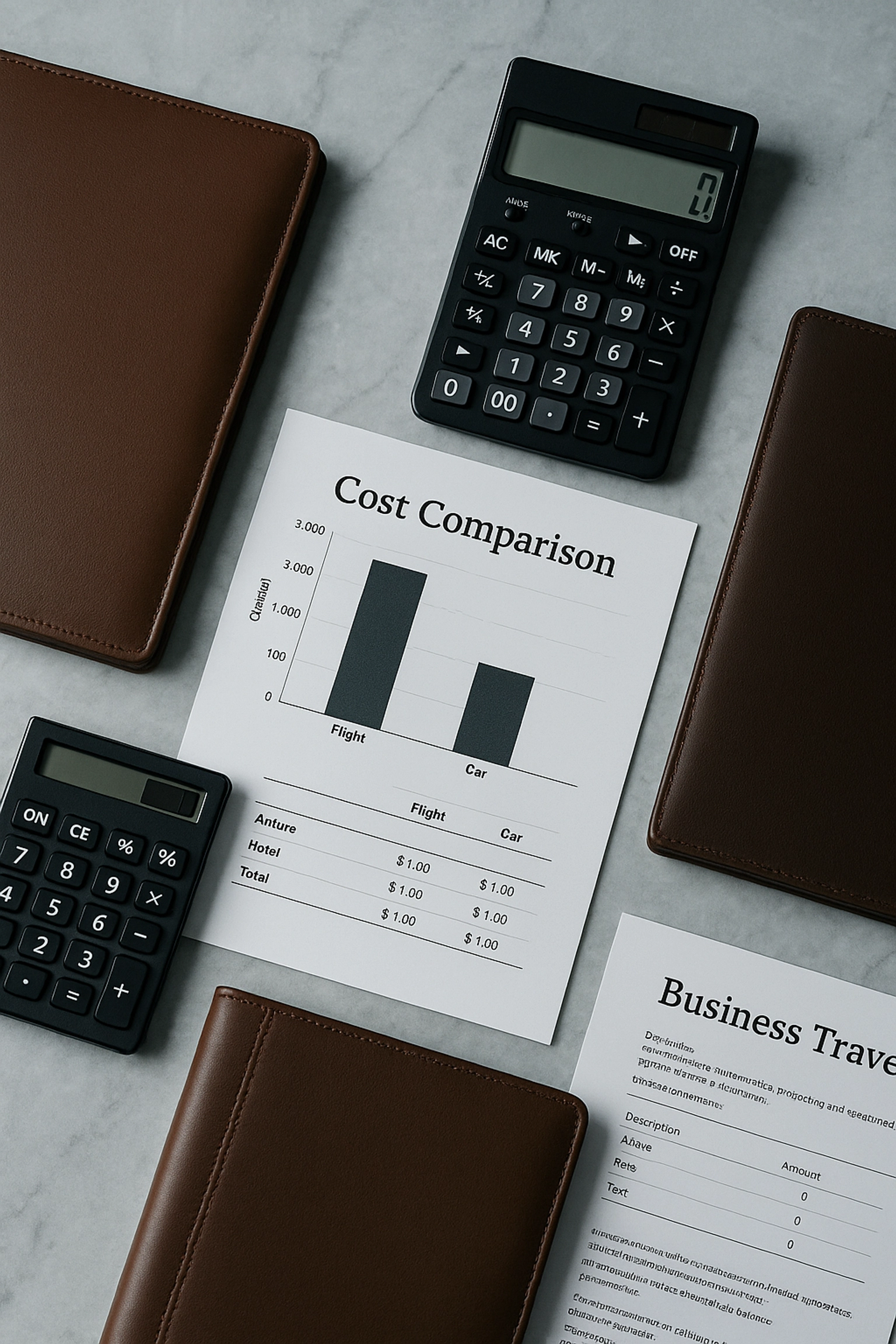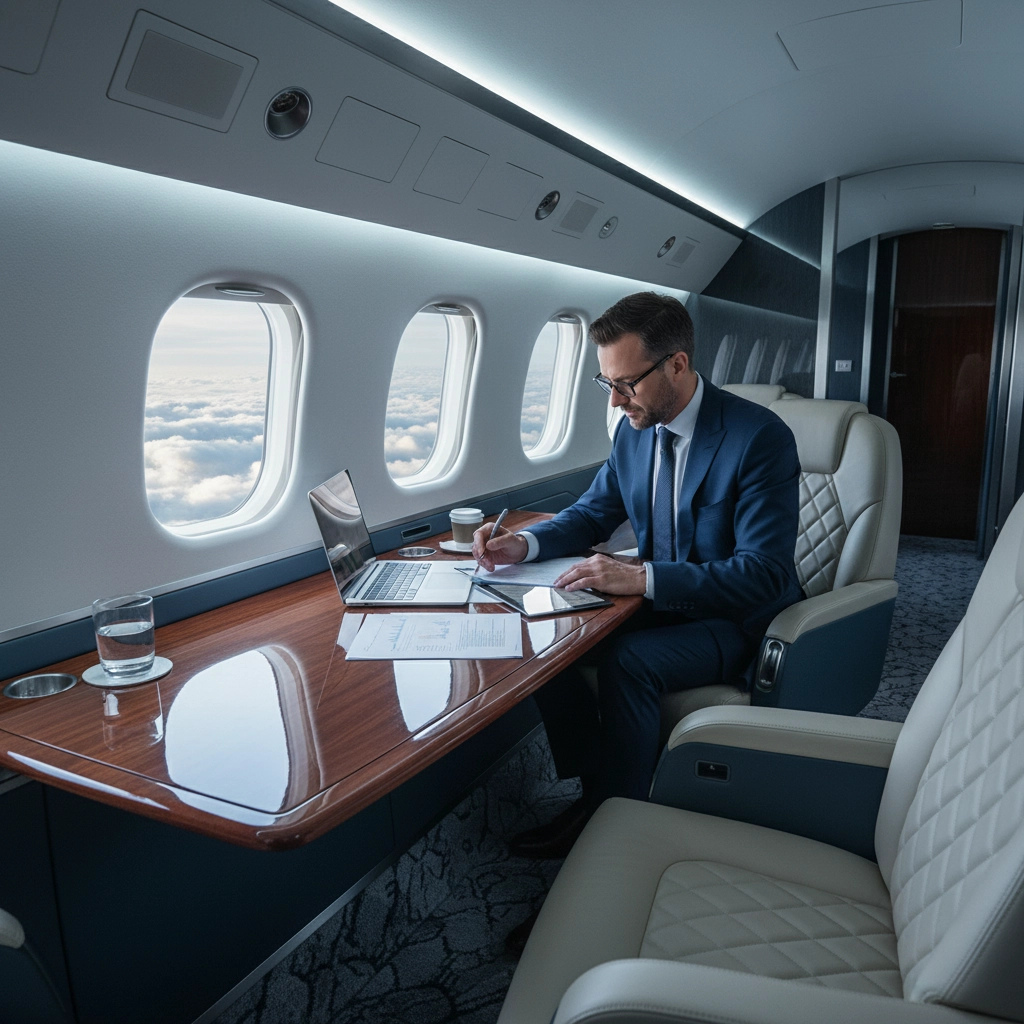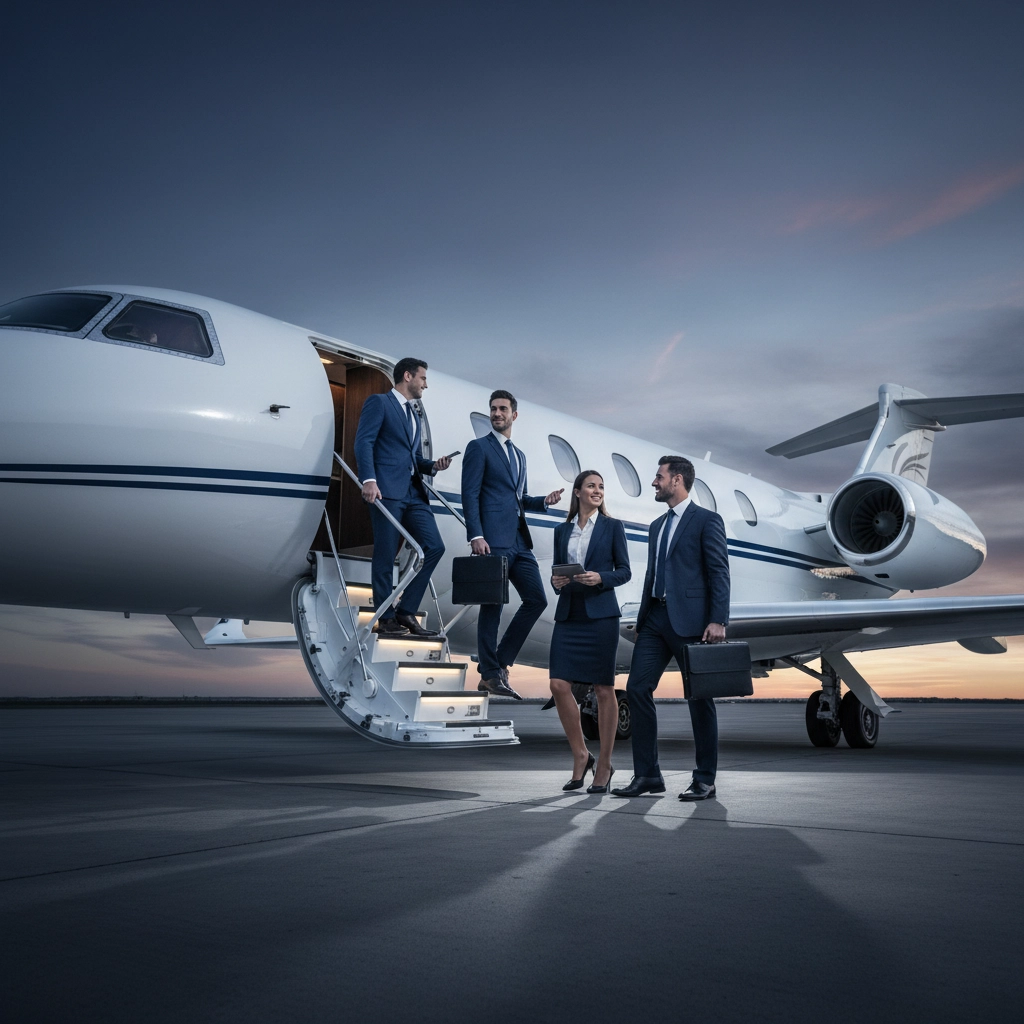When you're climbing the corporate ladder or running your own enterprise, every travel decision becomes a strategic choice. The age-old debate between business class and private jets isn't just about comfort: it's about maximizing your most valuable asset: time. As executive travel demands evolve in 2025, the lines between luxury and necessity continue to blur.
The short answer? It depends on your travel frequency, group size, time constraints, and budget priorities. But let's dive deeper into what each option really offers the modern executive.
The Business Class Experience: Premium Without the Premium Price Tag
Business class has evolved significantly over the past decade. Today's business class cabins offer lie-flat beds, gourmet dining, and dedicated concierge services that rival five-star hotels. Major airlines have invested billions in upgrading their premium products, with tickets typically ranging from $3,000 to $10,000 per passenger on international routes.
The appeal is obvious: you get enhanced comfort, priority treatment, and access to exclusive lounges without the eye-watering costs of private aviation. Business class passengers skip economy lines, enjoy expedited check-in, and often receive priority baggage handling. For the occasional executive traveler, these perks can feel transformative.
However, business class still operates within the constraints of commercial aviation. You're bound to airline schedules, hub airports, and the inevitable delays that plague commercial flights. Even with priority boarding, you'll still spend considerable time in security lines, waiting at gates, and dealing with the general chaos of busy airports.
Private Jets: When Time Truly Equals Money
Private jet travel represents a fundamental shift in how you approach aviation. Rather than working around airline schedules, you create your own. Charter costs range from $2,000 to $11,000 per flight hour, depending on aircraft size and route requirements, but this investment can transform your entire travel experience.
The time savings alone can justify the expense for frequent flyers. Executives regularly save 2 to 5 hours per trip through streamlined processes and direct routing. You can arrive at the airport 15 minutes before departure, skip security lines, and land at smaller regional airports closer to your final destination.
But the real value lies in productivity. Your private cabin becomes a mobile office where confidential calls, team meetings, and strategic planning can happen without interruption. For executives whose time directly translates to revenue, this productivity boost often offsets the higher travel costs.
The Real Cost Comparison
Let's break down the numbers that matter to your bottom line. A business class ticket from New York to London typically costs around $6,000-8,000 per person. For a solo executive, private jet charter on the same route could run $40,000-60,000 total.
The math changes dramatically with group travel. If you're traveling with your leadership team: say, four executives: those business class tickets total $24,000-32,000. Meanwhile, everyone flies together on the private jet for the same base charter cost, making the per-person expense competitive with business class while delivering superior time savings and productivity.
Empty leg flights through platforms like Private Legs can reduce private jet costs by up to 75%, making luxury aviation accessible for smaller groups or budget-conscious executives who still want the private jet experience.
Time: The Ultimate Executive Currency
Time efficiency separates good executives from great ones. While business class passengers still navigate crowded airports and fixed schedules, private jet travelers control their timeline completely.
Consider a typical business trip scenario: Your morning meeting in Chicago runs long, but you have an evening commitment in Miami. With commercial aviation, you're locked into predetermined flight times: miss your connection, and you're potentially stranded overnight. With private aviation, you simply adjust your departure time and fly direct.
This flexibility becomes even more valuable during peak travel seasons, weather disruptions, or when visiting multiple cities in quick succession. Private jets can access over 5,000 airports worldwide, compared to roughly 500 served by major commercial carriers.
When Business Class Makes Sense
Business class remains the intelligent choice for many executive travel scenarios. If you're traveling solo on established routes once or twice annually, the cost differential rarely justifies private aviation. The premium commercial experience delivers comfort and service that meets most executives' needs without requiring significant budget adjustments.
Business class also makes sense for executives who value airline loyalty programs, don't require scheduling flexibility, or work for organizations with strict travel policies. Many companies have negotiated corporate rates with major airlines that make business class an efficient use of travel budgets.
International long-haul routes often favor business class as well. Modern business class cabins on aircraft like the A350 or 787 offer exceptional comfort for overnight flights, and the infrastructure for international private aviation can be more complex and expensive.
When Private Jets Become Essential
Private aviation transforms from luxury to business necessity in several scenarios. High-frequency travelers: executives flying multiple times per quarter: often find the time savings and productivity gains justify the expense through increased business opportunities and operational efficiency.
Team travel scenarios particularly favor private jets. When multiple executives need to travel together, the per-person costs become competitive with business class while delivering superior logistics. Your entire team arrives together, can conduct meetings in flight, and maintains confidentiality for sensitive business discussions.
Time-sensitive travel also demands private aviation. When deals depend on your physical presence, weather delays on commercial flights can cost far more than charter expenses. Private jets offer routing flexibility and can often navigate weather challenges more effectively than commercial operations.
The Productivity Factor
Perhaps the most undervalued aspect of this comparison is productivity during flight time. Business class passengers share cabins with dozens of other travelers, limiting confidential conversations and creating distractions that reduce work efficiency.
Private jet cabins become extensions of your office. You can conduct video calls, review sensitive documents, hold team strategy sessions, or simply work without interruption. For executives whose decisions drive millions in revenue, this productive time often justifies the investment through better business outcomes.
Making the Strategic Choice
The business class vs private jet decision shouldn't be viewed through a simple cost lens. Instead, consider the total value equation: time savings, productivity gains, scheduling flexibility, and stress reduction all contribute to your effectiveness as an executive.
For occasional travelers prioritizing cost efficiency, business class delivers premium comfort without premium pricing. For frequent flyers who view travel as a strategic business tool, private aviation provides control, efficiency, and productivity that commercial aviation simply cannot match.
The modern executive's travel strategy might even incorporate both options strategically: business class for routine travel and private jets for time-critical missions, team travel, or complex itineraries where schedule control is paramount.
Your choice ultimately depends on whether you view travel as a cost center to manage or a competitive advantage to leverage. In today's fast-paced business environment, the executives who move fastest often move first, and sometimes that speed is worth every dollar spent on private aviation.
